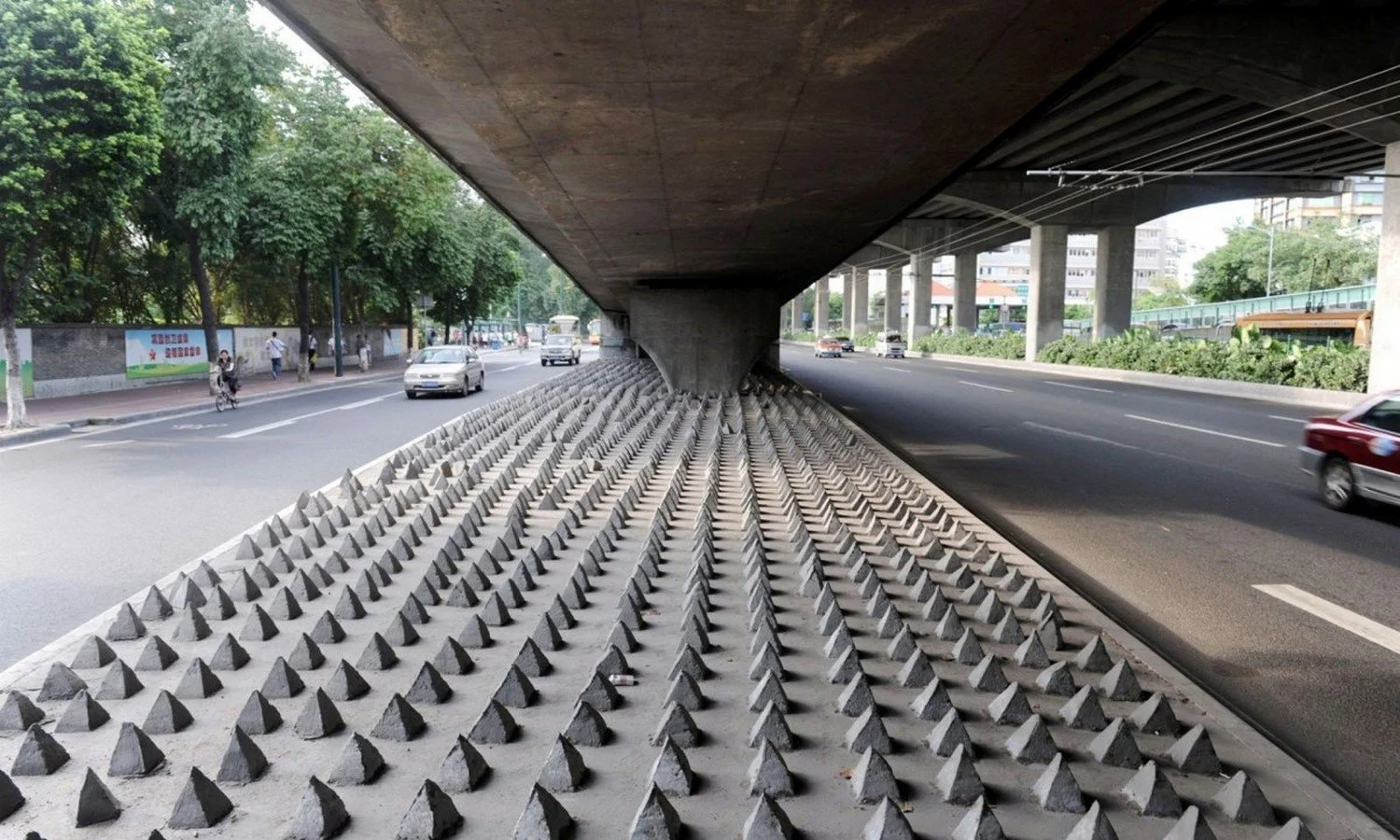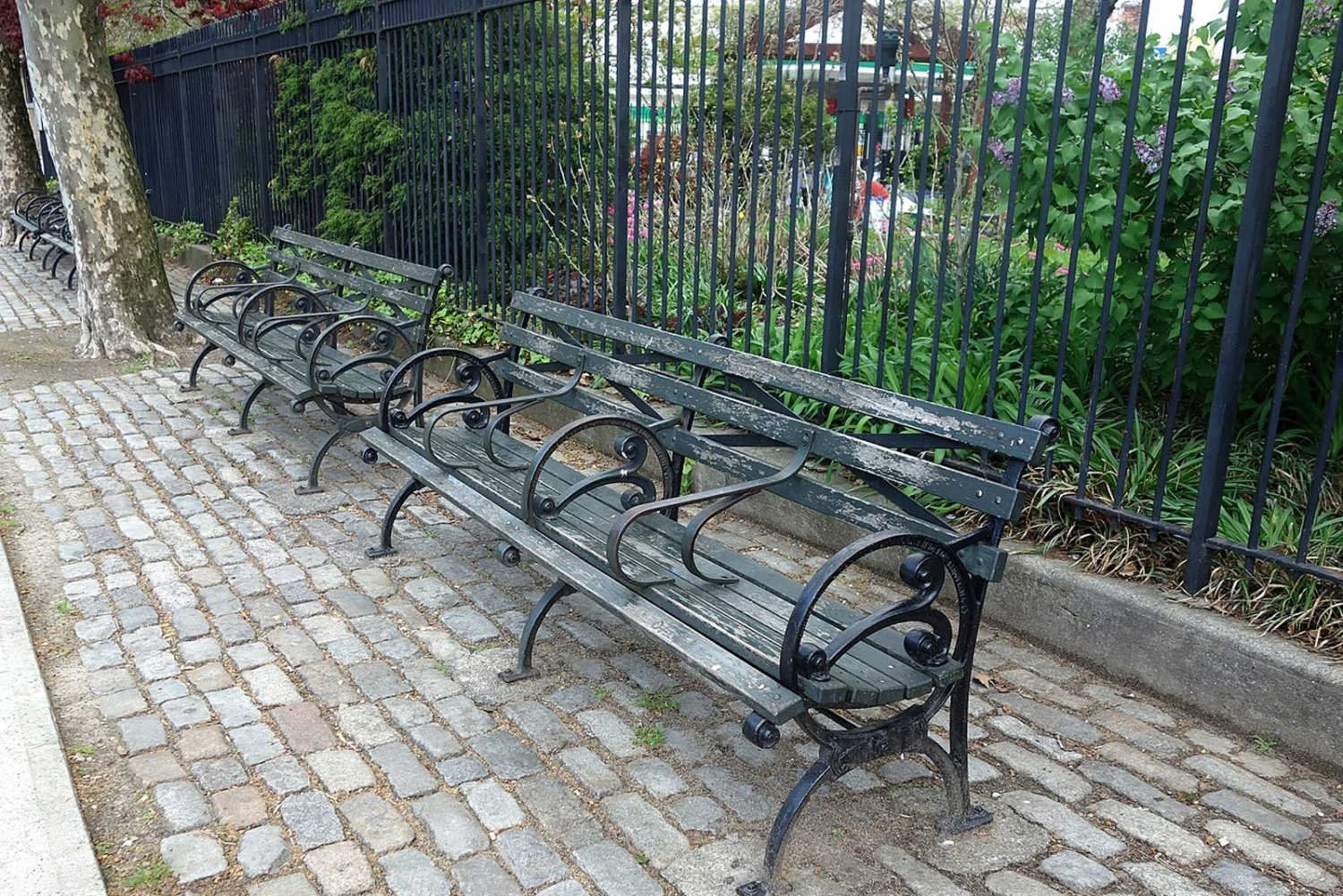Hostile Architecture
By: Nayomika Shashidhar
Edited by: Yohana Stefani Mbangga
In every country in the world, hostile architecture is making an appearance: benches with dividers, leaning bars, spikes on the ground, and more. What’s the purpose of these infrastructures? They were implemented due to necessity, in order for the supposed safety and wellbeing of others in the area, but could they be too aggressive and inconvenient? There is a myriad of stakeholders who are affected by the implementation of hostile architecture, sometimes even dubbed anti-homeless architecture (for good reason), which is why it is necessary to obtain the full picture and understand different perspectives, whether it be from those using these infrastructures, others (residents, frequent passers-by, etc) occupying the nearby areas or the wider community and government who are committed to ensuring the safety and wellbeing of residents and users of the area.
Firstly, it is important to consider why hostile architecture was implemented in the first place and the merits of doing so. They are initiated as a prevention measure, keeping users who use those structures for long periods of time such as homeless people from occupying them indefinitely. There have been cases where these people cause nuisances to others using them by their intended use, such as bus stop or transit-link stations, and prevent them from using them. In some cases, these occupants pose safety threats to the users themselves, making them feel unsafe in their own communities due to their propensity for crime, drug abuse, vandalism and more.
Hostile architecture, at its core, is a reaction to individual building level problems and are solutions designed by urban planners, builders, engineers or architects in order to fulfil their goal of creating a more comfortable environment for current residents. They do not have the power to change systemic homelessness and discrimination, and are simply trying to do their jobs the best they can. They sometimes also have design elements that make it more useful and easier for use in general, and are not implemented specifically to deter long-term occupants.
Furthermore, governments have various goals and needs of the community that they aim to be met, to cater to different parts of the population. Some hostile architecture could be a result of that, for example divided seating or armrests to benefit the elderly more and are not a direct attempt to prevent others from using them otherwise. Considering the needs of other long-term users such as homeless people in terms of their use of public infrastructure could be extremely troublesome and unrealistic as they have to consider factors such as the percentage of these people in the population, assess their specific needs, while simultaneously noting the support and criticism regarding their decisions from the public and how they should proceed and many other things. In this perspective, the benefits of hostile architecture outweigh the potential costs they may have.
Despite that, we must consider the effect that hostile architecture has on those previously using them as well, and how they negatively affect society as a whole. As for homeless people depending on these structures for survival, it simply makes life harder for them to cope with as they no longer have an available shelter to use. This is especially so for hostile architecture specifically designed to drive away homeless people, such as spikes on the ground.
Rather than serving any real purpose for the benefit of the community, it further harms and makes life infinitely harder for marginalised people already struggling from systemic issues as well as their own personal lives. Additionally, the loss of their current form of shelter may not necessarily inspire them to seek alternate, better accommodation; rather, it makes them feel much more demoralised and depressed about their standard of living.
Taking away some people’s only place of shelter would ultimately cause long term effects, such as negative mental health effects including sleep deprivation. The serious health impacts due to these could be contributing to the excessive use of hospital facilities as well, which are already stretched thin. Forcing people out of public safe spaces also puts them at more risk of violence and exposure to the harsh elements, further deteriorating their health.
Ultimately, knowing the incredibly harsh consequences that hostile architecture can have on its users, does it not seem like we, as more privileged and fortunate members of the community, have an ethical obligation to make sure that they are not completely neglected and do not have basic needs snatched away from them? Hostile architecture is often implemented in the name of the comfort of residents like us, sacrificing their shelter for our convenience.
It would also contribute even more to overcrowding of camps of homeless people and overflowing homeless shelters, due to the lack of current funding and resources given to organisations dedicated to helping homeless people. Without remedying the current situation, implementing hostile architecture to drive them away would simply make the situation worse in other areas in a attempt to create a more comfortable environment for others, with no regard for their survival. Would it not be better for the government to direct their resources towards implementing better and more ground up initiatives to ensure the safety and wellbeing of people in need without shelter?
These could include mental health facilities, health centres, shelter facilities and more. Even as activists, it is important to recognise this and direct energy and pressure on the government more towards these initiatives rather than solely opposing hostile architecture without a concrete end goal in mind.
While both sides of the argument have valid points, it is important to consider both the majority and minority affected in this situation, as well as the magnitude of the impact that it has on each stakeholder. While hostile architecture is implemented for the benefit and convenience of the majority of the population, it can adversely affect the trajectories of people’s entire lives, and it is always crucial to assess the total impact of both in order to do a fair cost-benefit analysis and think about both sides of the situation.



